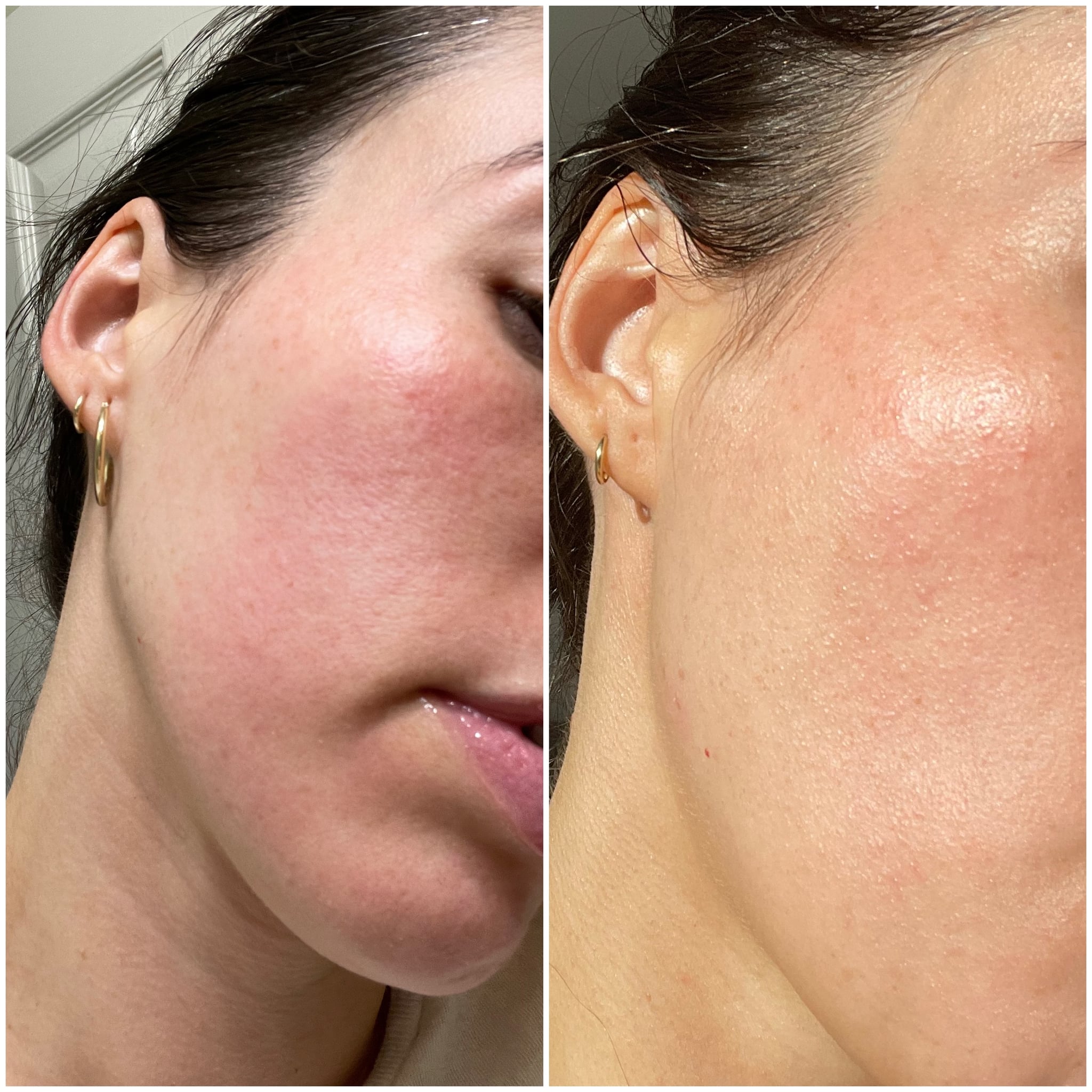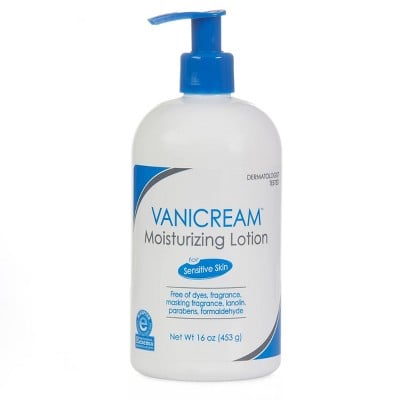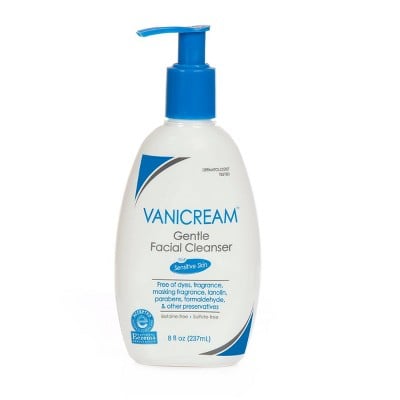- Contact dermatitis is a form of skin inflammation and is common for people with sensitive skin.
- The skin condition typically manifests as a red, itchy rash on the face or body.
- One dermatologist shares everything to know about contact dermatitis, including potential causes and how to treat it.
A few weeks ago as I was washing my face in the morning, I noticed that something felt off. My skin felt bumpy and textured, which wasn’t the norm for me. At first, I thought the culprit was my face wash — maybe it had expired without me noticing? — but after rinsing it off and applying my moisturizer, a pit settled in my stomach when I realized the texture was definitely on my face and not from one of my many beauty products.
In a panic, I rushed to the mirror and saw that redness, bumps, and a scaly dryness had settled over both of my cheeks overnight. Although I’ve had my fair share of acne battles, what was on my face didn’t look like anything I had experienced before. Two frantic calls to my dermatologist and one video chat later, I was given a diagnosis: contact dermatitis.
Having never experienced dermatitis before, I had tons of questions. The first being (of course), WTF actually is contact dermatitis? In an effort to learn more, I consulted Freddie Bartholomew, MD, FAAD, a board-certified dermatologist at the Berman Skin Institute, to see if he could shed some light on the situation.
What Is Contact Dermatitis?
To put it simply, it’s a condition that looks like a rash on the skin. “Dermatitis, sometimes called eczema, is a general term for skin inflammation,” Dr. Bartholomew told POPSUGAR.
As for contact dermatitis specifically, that “refers to inflammation caused by contact with a substance that does not agree with your skin.” Contact dermatitis can look different for everyone, but “signs of dermatitis you can see and feel on your skin can include redness, swelling, dryness, and itching. Contact dermatitis can manifest anywhere on the skin, which includes areas like the face, eyelids, and even the scalp.
What Can Cause Contact Dermatitis?
There are many causes of contact dermatitis “based on your medical history, lifestyle, environment, and use of personal-care products,” Dr. Bartholomew said. “Common examples include traces of nickel in gold jewelry, fragrances in deodorants or detergents, and preservatives in makeup-remover wipes.”
If you’re experiencing symptoms that could be related to contact dermatitis, it may be time to reach out to your dermatologist. My contact dermatitis showed up after I spent the night at a hotel, so it could have been caused by anything from the detergent they used on their towels to a surface-cleaning product they used shortly before I entered the room.
How to Treat Contact Dermatitis
Besides trying to figure out what irritated my skin to begin with, my most pressing question was how to get rid of it — and fast. The first rule of thumb is to stop using any potential triggers, including makeup or skin care with fragrances, essential oils, or other commonly irritating ingredients. Then, Dr. Bartholomew suggested, those experiencing contact dermatitis should reach out to a dermatologist to try to figure out the best course of treatment. “After identifying possible causes, treatment may involve avoiding likely culprits, focusing on gentle skin care, and applying short courses of medicated creams or ointments.”
For me, what worked was temporarily switching over to Vanicream’s Moisturizing Lotion ($14) and the brand’s unscented Gentle Facial Cleanser ($9) and using the topical triamcinolone cream my dermatologist prescribed. (One thing to note: Triamcinolone is a topical steroid and can cause steroid acne if overused. Consult with your doctor about whether or not a topical steroid is right for you.) I also completely avoided makeup and any of my normal skin-care products. It still took about a week for me to see anything really diminish, so in my opinion, your biggest tool is patience. (Typical healing time can be up to two weeks.)
How to Prevent Contact Dermatitis
As for avoiding contact dermatitis altogether, “Simplifying your skin-care routine can lessen the likelihood of irritation,” Dr. Bartholomew said. That means lessening your exposure to potentially triggering ingredients.
Before committing to a new product, do a patch test first. “For those with sensitive skin, I recommend starting with a small test area on your skin to ensure there’s no adverse reaction. Ideally, you should add only one new personal-care product at a time, so those products that don’t agree with your skin can be identified and avoided.”
In the end, the thing that helped me the most was time. Although I was hoping for a miracle product that would get rid of my bumps and dryness ASAP, giving the medication time to do its job and giving my skin a break from makeup really helped me. If you’re experiencing symptoms that could be contact dermatitis, a visit to a licensed dermatologist should get you on the right track.
Source: Read Full Article









